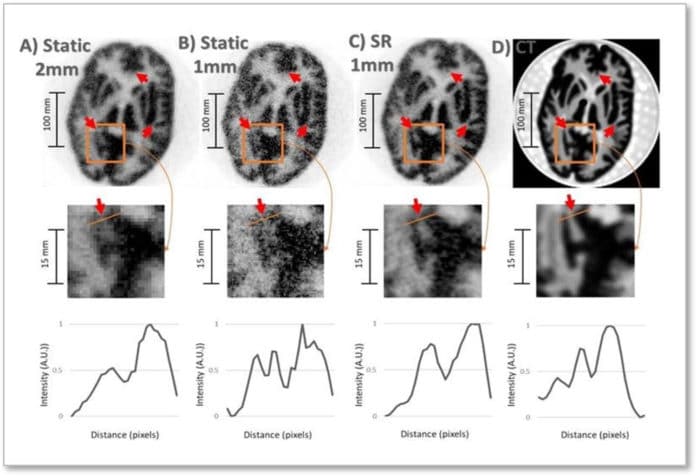Dubbed as super-resolution, a new brain-imaging technique could potentially detect neurological disorders such as Alzheimer’s disease at their earliest stages. The technique combines position emission tomography (PET), enabling physicians to diagnose and treat patients more quickly.
Positron emission tomography (PET) enables the visualization of metabolic processes in the body. Sometimes, a patient’s movement during brain scanning limits the image quality of PET imaging.
This new super-resolution technique combines position emission tomography (PET) with an external motion-tracking device to create highly detailed brain images. In addition, it harnesses the typically undesired head motion of subjects to enhance the resolution in brain PET.
Yanis Chemli, MSc, Ph.D., candidate at the Gordon Center for Medical Imaging in Boston, Massachusetts, said, “This work shows that one can obtain PET images with a resolution that outperforms the scanner’s resolution by making use, counterintuitively perhaps, of usually undesired patient motion. Our technique not only compensates for the negative effects of head motion on PET image quality, but it also leverages the increased sampling information associated with imaging of moving targets to enhance the effective PET resolution.”
Moving phantom and non-human primate experiments were performed on a PET scanner in conjunction with an external motion tracking device that continuously measured head movement with extremely high precision. Static reference PET acquisitions were also performed without inducing movement. After data from the imaging devices were combined, researchers recovered PET images with noticeably higher resolution than that achieved in the static reference scans.
Scientists tested their technique in preclinical studies. Now scientists are looking forward to testing it on human subjects.
Journal Reference:
- Yanis Chemli et al. Super-resolution in brain PET Using a Real-Time Motion Capture System.
